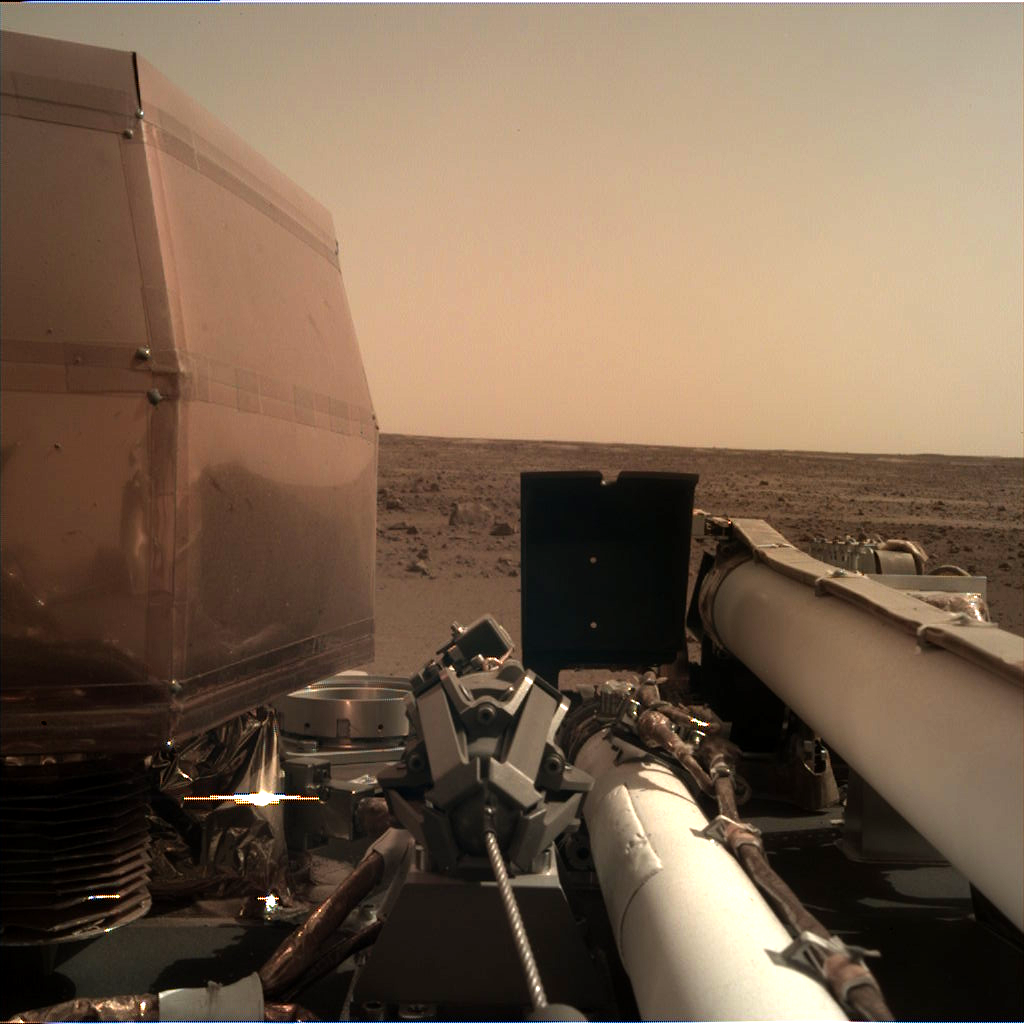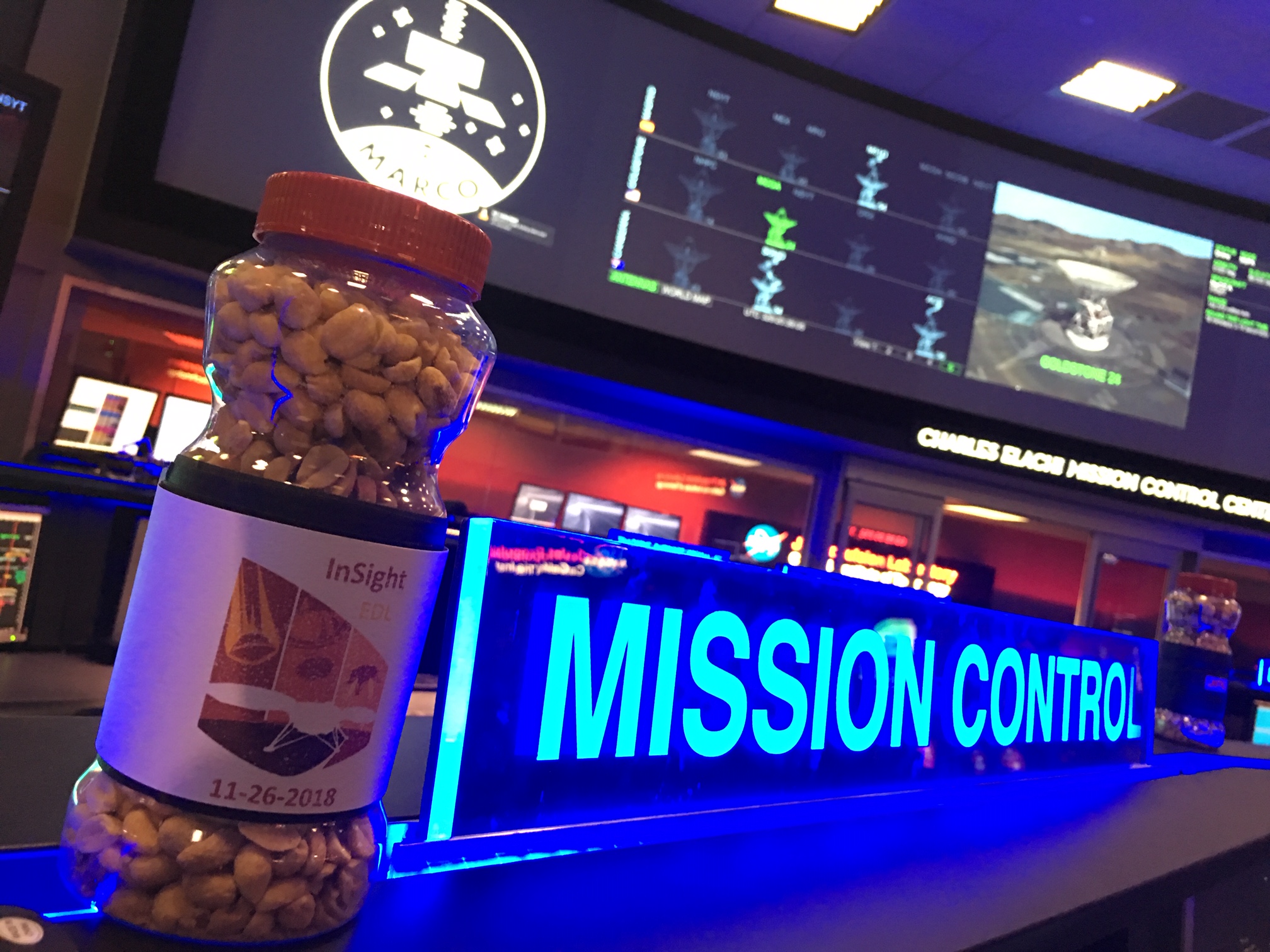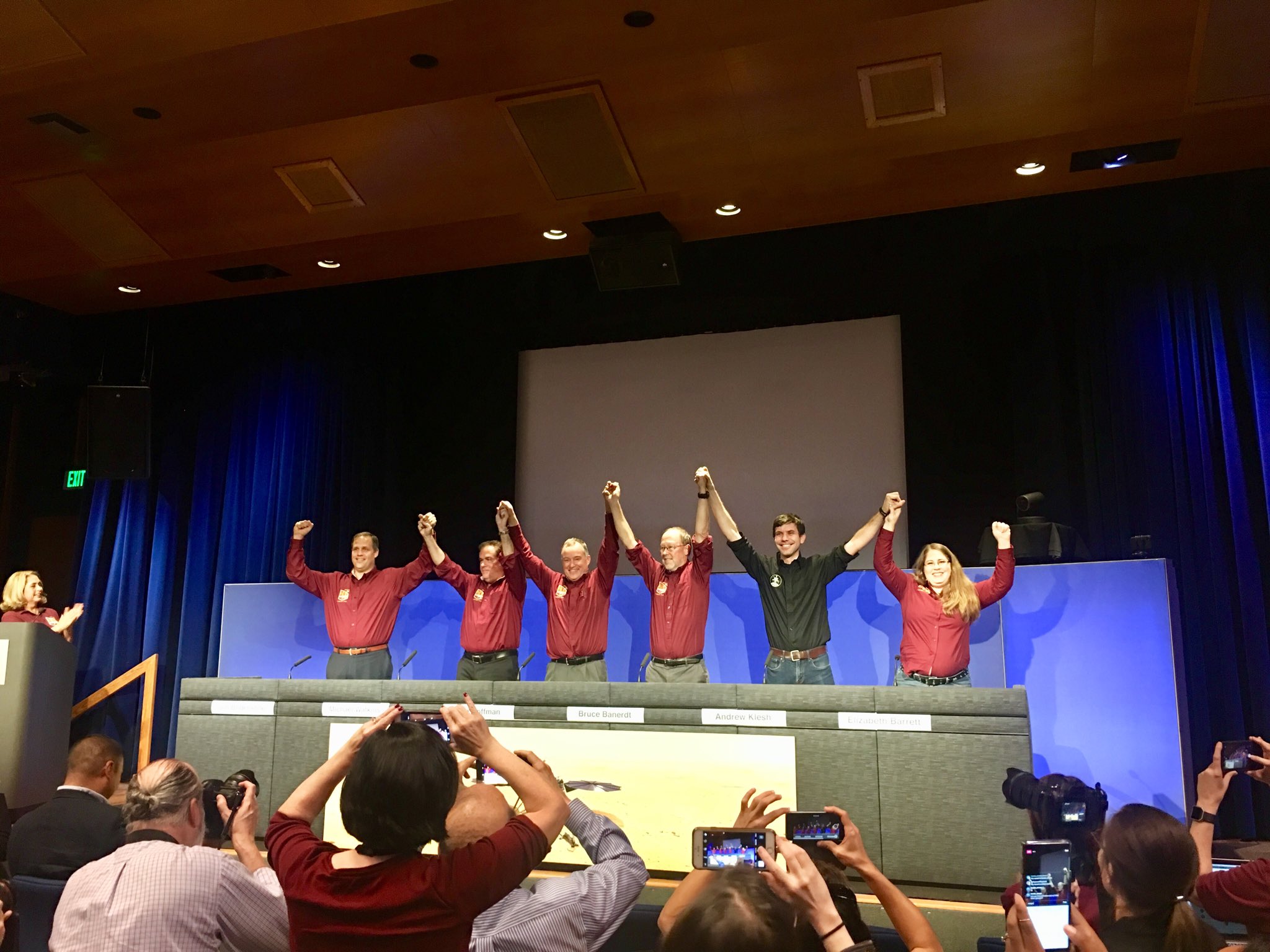After following InSight’s journey and dramatic landing on Mars, I’m now emotionally attached to the space robot.

It’s funny how our perception of the robots we send into space changes with the experiences we have with them. Take NASA’s InSight lander, for example.
I was thrilled to be able to see the mission launch on May 5 from my backyard. I was following the launch feed from my office in the early hours of the morning — lift-off was just after 4 a.m., so I was particularly proud that I hadn’t fallen asleep in my home office. Going outside, I looked to the northwest in hopes of glimpsing the light of the Atlas V-401 rocket as it rose into the dark pre-dawn skies. After I’d seen confirmation via the live-stream video of launch from Vandenburg Air Force Base (130 miles to the northwest of my home in Woodland Hills), I stood precariously on a patio chair to get a better view over my roof and… there it was! A bright plume rising and moving very fast toward the south. And then it was gone; the first ever mission to Mars launched from California was on its way into interplanetary space.
Needless to say, I quickly became invested in this space robot, but before I witnessed its launch from afar, it was another anonymous piece of cold space hardware. As soon as I saw its rocket plume, the mission became “real” and InSight was warmly embedded in my emotions.
NASA likes to play up the dangers of sending missions to Mars — and I can’t blame them; more Mars missions have failed than have succeeded. But in recent years, NASA has beaten the odds and landed all of their surface missions and inserted a bunch of satellites into orbit successfully. The last failed NASA mission to Mars was nearly 20 years ago (the Mars Polar Lander in 1999), everything else since — Mars Odyssey, the two Mars Exploration Rovers, Mars Reconnaissance Orbiter, Phoenix lander (InSight’s twin), Curiosity, MAVEN — have all been resounding successes.

Then, on Monday (Nov. 26), after nearly seven months since I saw it fly over my roof, InSight landed on the dusty surface of Mars.
I was fortunate to be at NASA’s Jet Propulsion Laboratory (JPL) on that day, covering the event for Scientific American and HowStuffWorks, and it was a thrill to be in the hub of all the festivities and spend time with my fellow science communicators. JPL always puts together a great event — whether that be the landing of Curiosity over six years ago, or the sad farewell of Cassini last year — and this was no different. The air was thick with anticipation, and all of the mission scientists, managers and engineers were more than willing to share their stories with the dozens of journalists, reporters, social media peeps and TV crews who were in attendance.
Then it was time for landing.
Sending a mission to Mars is risky and, as already pointed out, in the earlier days of humanity throwing stuff at Mars the majority of the missions failed. So, understandably, everyone had a healthy level of nervousness that there was always a chance that InSight might just make another (expensive) crater in the Martian dirt. But that wasn’t to be. And by all accounts, the landing couldn’t have gone better.

Jim Bridenstine (far left) at NASA JPL
The two Mars Cube One (MarCO) spacecraft that were flying with InSight during its time cruising from Earth became the undisputed silicon heroes of the day. Their purpose was to relay telemetry data from InSight as the lander slammed into the Martian atmosphere to commence its hair-raising entry, descent and landing (EDL) on Mars — a.k.a. the Seven Minutes or Six and a Half Minutes Of Terror, depending on who you talk to. As InSight would be landing in a region where there wouldn’t be a satellite overpass for several hours after landing, MarCO became the relay that, in real time (minus the several minute lag-time that it takes for any signal to travel at the speed of light between Mars and Earth) prevented too many chewed fingernails and passed the message to mission control that the lander had landed safely and everything was, well, just perfect.
In the media area, with a live feed streaming from just next door on the JPL campus, any nervousness evaporated when we all cheered with the mission controllers who were celebrating on the screen. Memories of Curiosity’s landing came flooding back. NASA has done it again, we’re on Mars!
And then, despite warnings that it might be some time before we see the first view of Elysium Planitia from InSight’s camera, we became aware that the mood had changed in mission control. Managers were now huddled around a computer terminal. They were receiving the first image only a few minutes after touch down!

Keep in mind that relaying this image would have been impossible without InSight’s MarCO travel buddies. The success of the mission didn’t depend on MarCO, but they sure made the landing event a more lively celebration, rather than a “yes we’re on Mars, but no pictures until tomorrow!” anticlimax. I asked a couple of the MarCO managers what was next for their robotic heroes, and they said that their mission was complete and that they were a proof of concept “that was now proven.” Apparently, managers for other robotic space missions are planning MarCO-like payloads for future missions. Justifiably so.
Monday was a blur, but I remember walking away from JPL feeling emotional and humbled. Humanity is capable of doing incredible, bold things, I thought to myself. Why can’t we be more like this? Discussing the nature of humanity and our contradictory ways can be saved for another day, however.
Now that we’ve lived InSight’s dramatic journey to Mars, the lander has become more than a robot, it’s a bona fide Mars explorer that, like Curiosity and all the landers and rovers that have come before it, is an extension of the human experience. Designed to live in the Martian environment, InSight has arrived home. Hopes are high for some incredible scientific discoveries about Mars’ interior and its evolution, but I’m also hopeful that the mission will inspire people to embrace our natural urge to explore and discover new things about our universe. This time exploration will be done through the eyes of the newest space robot to join its Martian family, but some time in the next couple of decades, it will be human eyes exploring Elysium Planitia.
For more about the science behind InSight, read my articles for Scientific American and HowStuffWorks.com:

4 thoughts on “We Have a New Robot Heartbeat On Mars”